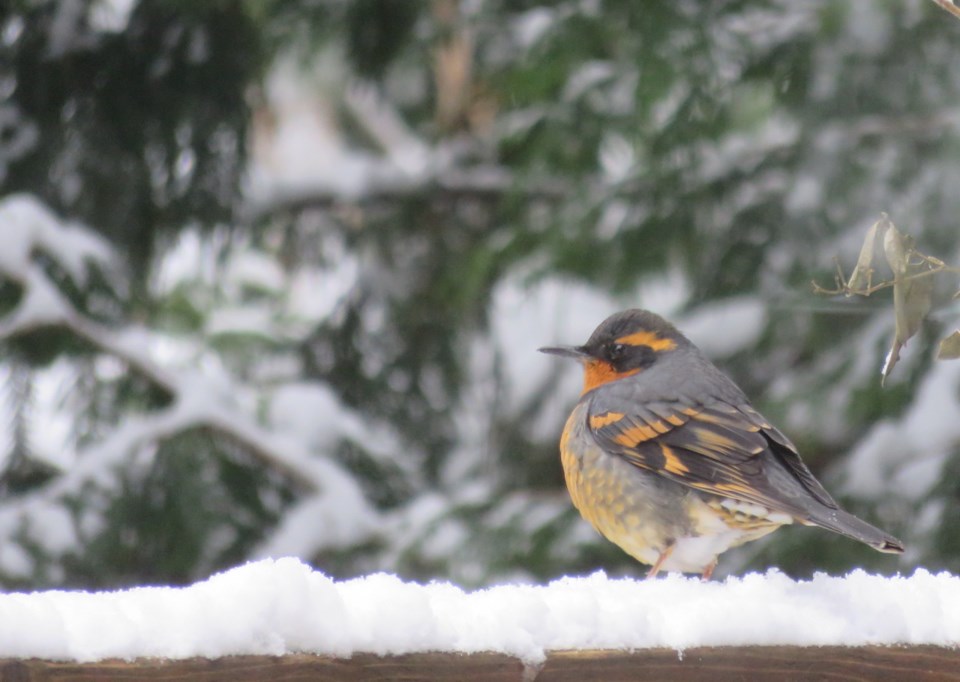The first storm of the fall is blowing as I write this, perhaps indicating a sea-change in the weather. At least the garden is finally wet, bringing relief to the drooping rhododendrons. We will wait and see what this el Nino winter may bring.
The birds do not wait for the weather, responding largely to the shortening days and all the implications of that in terms of their food sources. In the springtime, an estimated 2.6 billion birds cross northwards over the Canada-USA border. In the fall, the southbound number is estimated at four billion, the number being greater because of all the young raised that year. By late September the vast majority of these birds have departed, though there is still a southward movement of ducks and geese, raptors, sparrows and also of individual species such as robins and yellow-rumped warblers. Robins have been super abundant during September, feasting on a variety of fruits and seeds, but their numbers will decline steadily through to mid-winter lows in December when there are usually very few left on the Sunshine Coast. They are however, early spring migrants and numbers increase again starting in late January.
Though many of the birds that cross the border have departed, we still await the massive influx of birds and species, which arrive to winter with us from areas north and east that will begin to freeze up in October. Many of these are waterbirds that rely on open water to survive, and the Salish Sea is a prime wintering destination for swans, geese, ducks, grebes, loons, gulls, and alcids. Landbirds that arrive to winter with us include varied thrush, ruby-crowned kinglet, fox sparrow and dark-eyed junco. October is the month when southbound geese will be overhead in their voluble V-shaped skeins. Four species are involved: Canada, cackling, white-fronted and snow, with snow geese in the majority (identified by their white bodies with black wingtips). Most of these geese will stopover for varying lengths of time in the Fraser delta, before moving further southward along the West Coast.
The Sunshine Coast Natural History Society begins its monthly program of natural history presentations on Friday, Oct. 6 at 7 p.m. at the Sechelt Arts Centre. The first presentation is a photographic birding trip to exotic Borneo by Rand Rudland. New members are welcome. Membership details can be viewed on the SCNHS website at sites.google.com/view/sunshinecoastnhs/home. SCNHS also runs a monthly birding field trip, with the October outing on Saturday, Oct. 7 to the raptor migration viewing location on Mt. Elphinstone. See the website for details.
To report your sightings or questions contact [email protected] or 604-885-5539. Good Birding.



